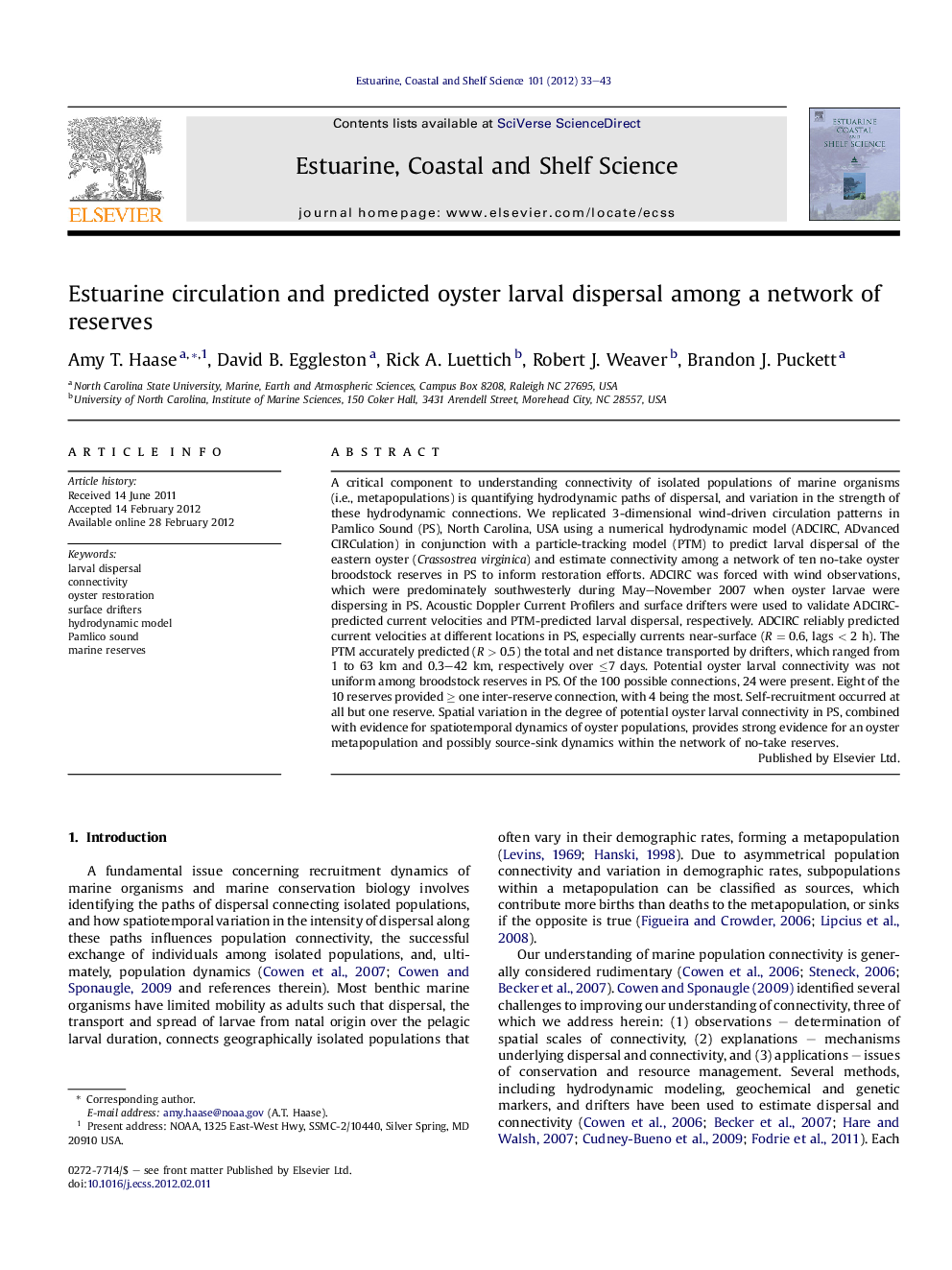| Article ID | Journal | Published Year | Pages | File Type |
|---|---|---|---|---|
| 4540238 | Estuarine, Coastal and Shelf Science | 2012 | 11 Pages |
A critical component to understanding connectivity of isolated populations of marine organisms (i.e., metapopulations) is quantifying hydrodynamic paths of dispersal, and variation in the strength of these hydrodynamic connections. We replicated 3-dimensional wind-driven circulation patterns in Pamlico Sound (PS), North Carolina, USA using a numerical hydrodynamic model (ADCIRC, ADvanced CIRCulation) in conjunction with a particle-tracking model (PTM) to predict larval dispersal of the eastern oyster (Crassostrea virginica) and estimate connectivity among a network of ten no-take oyster broodstock reserves in PS to inform restoration efforts. ADCIRC was forced with wind observations, which were predominately southwesterly during May–November 2007 when oyster larvae were dispersing in PS. Acoustic Doppler Current Profilers and surface drifters were used to validate ADCIRC-predicted current velocities and PTM-predicted larval dispersal, respectively. ADCIRC reliably predicted current velocities at different locations in PS, especially currents near-surface (R = 0.6, lags < 2 h). The PTM accurately predicted (R > 0.5) the total and net distance transported by drifters, which ranged from 1 to 63 km and 0.3–42 km, respectively over ≤7 days. Potential oyster larval connectivity was not uniform among broodstock reserves in PS. Of the 100 possible connections, 24 were present. Eight of the 10 reserves provided ≥ one inter-reserve connection, with 4 being the most. Self-recruitment occurred at all but one reserve. Spatial variation in the degree of potential oyster larval connectivity in PS, combined with evidence for spatiotemporal dynamics of oyster populations, provides strong evidence for an oyster metapopulation and possibly source-sink dynamics within the network of no-take reserves.
